#bodenheim
Explore tagged Tumblr posts
Text

Chamomile (Tripleurospermum perforatum)Bodenheim, Germany
By Vera Buhl
0 notes
Text
The euphoric high of reading someone who has intelligent thoughts about North and South.
#It's so sad that I keep finding different versions of#Margaret Hale changes John Thornton into a Carlylean Captain of Industry#read the novel I beg you#But Bodenheimer understands the subtlety of the moral transformations in the novel#the particular way in which its highlight of interdependence as essential to human relationships#seeks to transcend the utilitarian/intuitionist liberal/paternalist divide in ethics and politics#ahhhhh like eatiing a delicious piece of dessert#FINALLY
16 notes
·
View notes
Text
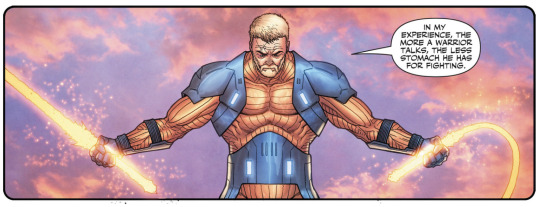
In my experience, the more a warrior talks, the less stomach he has for fighting.
(X-O Manowar #11)
#x-o manowar#Aric#shanhara#warrior#uh oh#space opera#matt kindt#Ryan bodenheim#valiant comics#comics#2010s comics
9 notes
·
View notes
Text
(JTA) — A public university in Switzerland is looking for its next Jewish studies professor, and one requirement on the job posting has drawn scrutiny from local Jews: all applicants to the position must be Catholic.
The opening, for a professor of Judaic studies and theology, is currently listed at the Faculty of Theology at the University of Lucerne, an hour south of Zurich.
Even though the university is public, that academic department is officially affiliated with the Catholic Church — which prohibits non-Catholic professors from teaching “doctrinal” courses such as philosophy, liturgy, scripture, Catholic theology and fundamental theology. That includes teaching about non-Christian religions such as Judaism. Non-Catholic professors may be invited as guest lecturers or visiting professors.
The Jewish studies and theology professor would be responsible for teaching and research related to Judaic studies, as well as leading the Institute for Jewish-Christian Research, according to the job posting.
Alfred Bodenheimer, who worked at the University of Lucerne from 1997 to 2003 in a Jewish teaching and research position, said the prohibition of non-Catholics hampered his career there.
“It seems to be the case that it simply doesn’t fit into our times anymore — that you say someone who teaches Jewish studies cannot be anyone else but a Catholic,” Bodenheimer, who now teaches at the University of Basel, told the Jewish Telegraphic Agency.
“I really saw that as a Jewish person at this university, I would always be something like a subaltern, with no chance to have more possibilities, influence and so on,” he added. “I became aware of the fact that this whole situation was very asymmetric, that I as a Jew would always be not on the same stage as my Catholic boss.”
Like Lucerne, the University of Basel is a public university. But its theology department is Protestant, rather than affiliated with the Catholic Church. In total, Switzerland has 12 public universities, at least two of which have Catholic Church-affiliated theology departments.
16 notes
·
View notes
Text

Medieval Bodenheim Castle in Euskirchen, North Rhine-Westphalia, Germany
German vintage postcard, mailed in 1915 to Marseille, France
#historic#euskirchen#1915#photo#briefkaart#marseille#vintage#bodenheim castle#sepia#photography#medieval#carte postale#castle#postcard#mailed#postkarte#france#postal#tarjeta#ansichtskarte#old#bodenheim#ephemera#postkaart#german#germany
9 notes
·
View notes
Text
Schimbarea numelui i s-a părut o lipsă de loialitate. Ba chiar o renunțare la rădăcini, la începuturi, la părinți și la cei cinci frați.

#Bucuresti#Edward G Robinson#Edward G Robinson Jr#Edward Gould Robinson#FILM#Gladys Lloyd#Hollywood#Jane Bodenheimer Adler#Nașul#New York#Oscar#star de cinema#cinema#cinematography#movie#pelicula
0 notes
Text
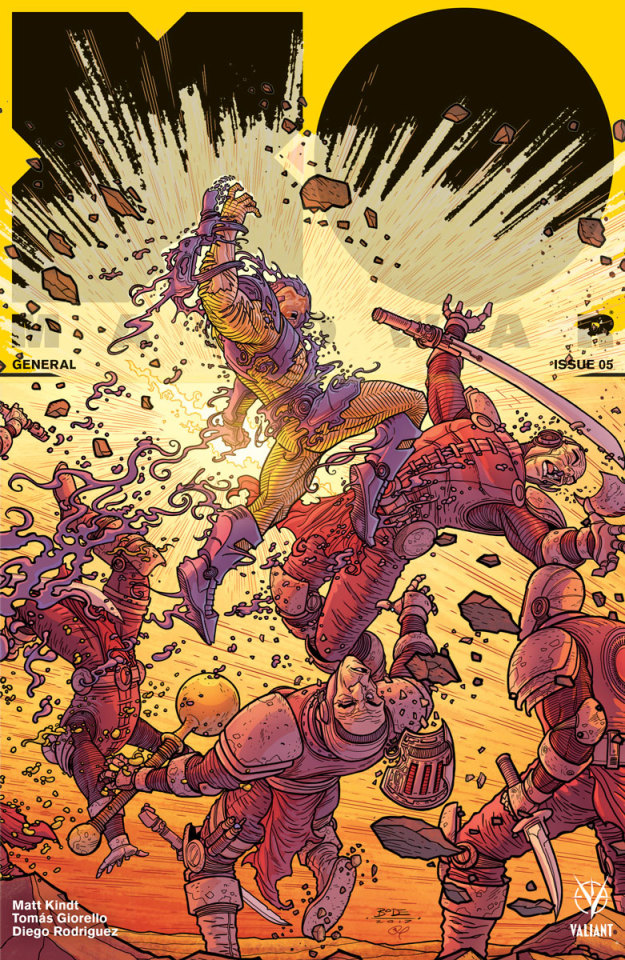
Ryan Bondenheim - X-O Manowar
1 note
·
View note
Text
La poesia è l’impertinente tentativo
di dipingere il colore del vento
Maxwell Bodenheim

19 notes
·
View notes
Photo
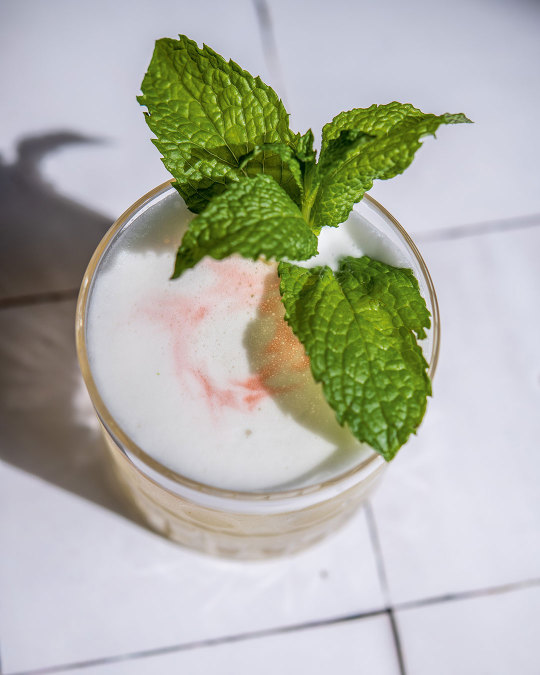
RECIPE: Irish Goodbye (from Cure: New Orleans Drinks and How to Mix 'Em by Neal Bodenheimer and Emily Timberlake)
Matt Lofink describes this as a dry, not-too-sweet, “very crushable” whiskey sour. Fennel and peach is an unexpected but delicious flavor pairing that works amazingly well with the spice notes of the whiskey.
¾ ounce (22.5 ml) fresh lemon juice
1 medium egg white
1. ounces (45 ml) Tullamore D.E.W. Irish whiskey
¼ ounce (7.5 ml) Giffard crème de pêche liqueur
¼ ounce (7.5 ml) Fennel Syrup (recipe follows)
4 mint leaves
10 drops Peychaud’s bitters, for garnish
Mint sprig, for garnish
Combine the lemon juice and egg white in a shaker tin without ice and dry-shake for 30 seconds. Add the whiskey, pêche liqueur, fennel syrup, and mint leaves to the shaker tin, fill the shaker with ice, and shake until chilled. Double-strain into a double old-fashioned glass filled with ice. Dot the bitters on the surface of the drink, then use a toothpick or cocktail straw to swirl the bitters in an attractive pattern. Garnish with the mint sprig and serve.
RECIPE: Fennel Syrup
Makes about 2 cups (480 ml)
2 tablespoons fennel seeds
2 cups (480 ml) hot (190 to 200°F/88 to 93°C) water
2 cups (400 g) white sugar
In a small skillet over medium heat, toast the fennel seeds until fragrant, 1 to 2 minutes. Transfer to a bowl, add the water, and infuse until the water is cool. Add the sugar, stir until dissolved, then fine-strain and store in the refrigerator for up to 4 weeks.
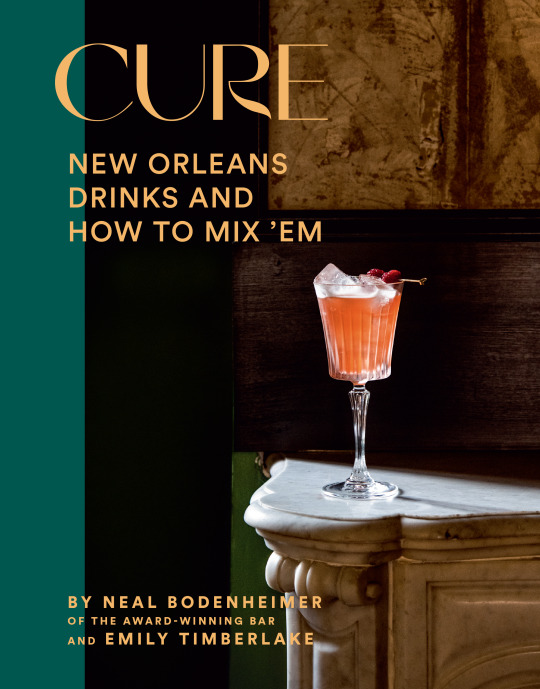
From the foremost figure on the New Orleans' drinking scene and the owner of renowned bar Cure, a cocktail book that celebrates the vibrant city
New Orleans is known for its spirit(s)-driven festivities. Neal Bodenheimer and coauthor Emily Timberlake tell the city’s story through 100 cocktails, each chosen to represent New Orleans’ past, present, and future. A love letter to New Orleans and the cast of characters that have had a hand in making the city so singular, Cure: New Orleans Drinks and How to Mix 'Em features interviews with local figures such as Ian Neville, musician and New Orleans funk royalty, plus a few tips on how to survive your first Mardi Gras. Along the way, the reader is taken on a journey that highlights the rich history and complexity of the city and the drinks it inspired, as well as the techniques and practices that Cure has perfected in their mission to build forward rather than just looking back. Of course, this includes the classics every self-respecting drinker should know, especially if you’re a New Orleanian: the Sazerac, Julep, Vieux Carré, Ramos Gin Fizz, Cocktail à la Louisiane, and French 75. Famous local chefs have contributed easy recipes for snacks with local flavor, perfect for pairing with these libations. Cure: New Orleans Drinks and How to Mix 'Em is a beautiful keepsake for anyone who has fallen under New Orleans’s spell and a must-have souvenir for the millions of people who visit the city each year.
For more information, click here.
#abramsbooks#abrams books#cure#cure cocktail book#cure nola#cure new orleans#st. patrick's day#irish goodbye#cocktail recipe#cocktails
19 notes
·
View notes
Text
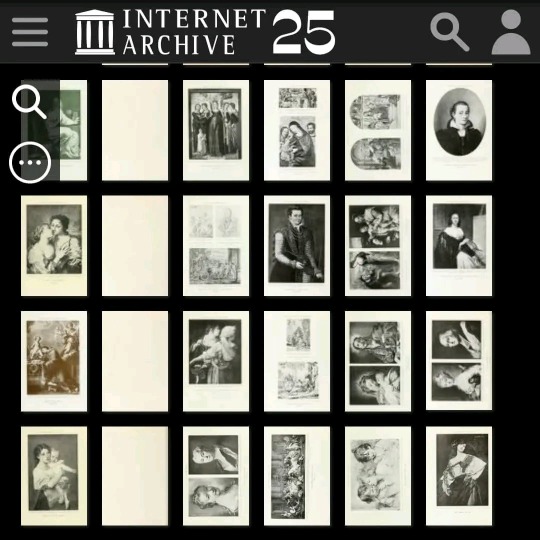
What a treasure! - with a special dedication to @dinahvaginaart
Women Painters of the World, from the time of Caterina Vigri, 1413–1463, to Rosa Bonheur and the present day, assembled and edited by #WalterShawSparrow, lists an overview of prominent #womenpainters up to 1905, the year of publication.
How is this NOT ?! a compulsory book at the each and every #artcourse?! #artherstory
Here's the list of the painters (this will keep me busy for some time :)
Louise Abbéma
Madame Abran (Marthe Abran, 1866-1908)
Georges Achille-Fould
Helen Allingham
Anna Alma-Tadema
Laura Theresa Alma-Tadema
Sophie Gengembre Anderson
Helen Cordelia Angell
Sofonisba Anguissola
Christine Angus
Berthe Art
Gerardina Jacoba van de Sande Bakhuyzen
Antonia de Bañuelos
Rose Maynard Barton
Marie Bashkirtseff
Jeanna Bauck
Amalie Bauerlë
Mary Beale
Lady Diana Beauclerk
Cecilia Beaux
Ana Bešlić
Marie-Guillemine Benoist
Marie Bilders-van Bosse
Lily Blatherwick
Tina Blau
Nelly Bodenheim
Kossa Bokchan
Rosa Bonheur
Mlle. Bouillier
Madame Bovi[2]
Olga Boznanska
Louise Breslau
Elena Brockmann
Jennie Augusta Brownscombe
Anne Frances Byrne
Katharine Cameron
Margaret Cameron (Mary Margaret Cameron)
Marie Gabrielle Capet
Margaret Sarah Carpenter
Madeleine Carpentier
Rosalba Carriera
Mary Cassatt
Marie Cazin
Francine Charderon
Marian Emma Chase
Zoé-Laure de Chatillon
Jeanne-Elisabeth Chaudet
Lilian Cheviot
Mlle. Claudie
Christabel Cockerell
Marie Amélie Cogniet
Uranie Alphonsine Colin-Libour
Jacqueline Comerre-Paton
Cornelia Conant
Delphine Arnould de Cool-Fortin
Diana Coomans
Maria Cosway
Amelia Curran
Louise Danse
Héléna Arsène Darmesteter
Maria Davids
Césarine Davin-Mirvault
Evelyn De Morgan
Jane Mary Dealy
Virginie Demont-Breton
Marie Destrée-Danse
Margaret Isabel Dicksee
Agnese Dolci
Angèle Dubos
Victoria Dubourg
Clémentine-Hélène Dufau
Mary Elizabeth Duffield-Rosenberg
Maud Earl
Marie Ellenrieder
Alix-Louise Enault
Alice Maud Fanner
Catherine Maria Fanshawe
Jeanne Fichel
Author
Walter Shaw Sparrow
Country
United Kingdom
Language
English language
Genre
Art history
Publisher
Hodder & Stoughton, Frederick A. Stokes
Publication date
1905
Pages
331
The purpose of the book was to prove wrong the statement that "the achievements of women painters have been second-rate."[1] The book includes well over 300 images of paintings by over 200 painters, most of whom were born in the 19th century and won medals at various international exhibitions. The book is a useful reference work for anyone studying women's art of the late 19th century
Louise Abbéma
Madame Abran (Marthe Abran, 1866-1908)
Georges Achille-Fould
Helen Allingham
Anna Alma-Tadema
Laura Theresa Alma-Tadema
Sophie Gengembre Anderson
Helen Cordelia Angell
Sofonisba Anguissola
Christine Angus
Berthe Art
Gerardina Jacoba van de Sande Bakhuyzen
Antonia de Bañuelos
Rose Maynard Barton
Marie Bashkirtseff
Jeanna Bauck
Amalie Bauerlë
Mary Beale
Lady Diana Beauclerk
Cecilia Beaux
Ana Bešlić
Marie-Guillemine Benoist
Marie Bilders-van Bosse
Lily Blatherwick
Tina Blau
Nelly Bodenheim
Kossa Bokchan
Rosa Bonheur
Mlle. Bouillier
Madame Bovi[2]
Olga Boznanska
Louise Breslau
Elena Brockmann
Jennie Augusta Brownscombe
Anne Frances Byrne
Katharine Cameron
Margaret Cameron (Mary Margaret Cameron)
Marie Gabrielle Capet
Margaret Sarah Carpenter
Madeleine Carpentier
Rosalba Carriera
Mary Cassatt
Marie Cazin
Francine Charderon
Marian Emma Chase
Zoé-Laure de Chatillon
Jeanne-Elisabeth Chaudet
Lilian Cheviot
Mlle. Claudie
Christabel Cockerell
Marie Amélie Cogniet
Uranie Alphonsine Colin-Libour
Jacqueline Comerre-Paton
Cornelia Conant
Delphine Arnould de Cool-Fortin
Diana Coomans
Maria Cosway
Amelia Curran
Louise Danse
Héléna Arsène Darmesteter
Maria Davids
Césarine Davin-Mirvault
Evelyn De Morgan
Jane Mary Dealy
Virginie Demont-Breton
Marie Destrée-Danse
Margaret Isabel Dicksee
Agnese Dolci
Angèle Dubos
Victoria Dubourg
Clémentine-Hélène Dufau
Mary Elizabeth Duffield-Rosenberg
Maud Earl
Marie Ellenrieder
Alix-Louise Enault
Alice Maud Fanner
Catherine Maria Fanshawe
Jeanne Fichel
Rosalie Filleul
Fanny Fleury
Julia Bracewell Folkard
Lavinia Fontana
Elizabeth Adela Forbes
Eleanor Fortescue-Brickdale
Consuélo Fould
Empress Frederick of Germany
Elizabeth Jane Gardner
Artemisia Gentileschi[3]
Diana Ghisi
Ketty Gilsoul-Hoppe
Marie-Éléonore Godefroid
Eva Gonzalès
Maude Goodman
Mary L. Gow
Kate Greenaway
Rosina Mantovani Gutti
Gertrude Demain Hammond
Emily Hart
Hortense Haudebourt-Lescot
Alice Havers
Ivy Heitland
Catharina van Hemessen
Matilda Heming
Mrs. John Herford
Emma Herland
E. Baily Hilda
Dora Hitz
A. M. Hobson
Adrienne van Hogendorp-s' Jacob
Lady Holroyd
Amelia Hotham
M. J. A. Houdon
Joséphine Houssaye
Barbara Elisabeth van Houten
Sina Mesdag van Houten
Julia Beatrice How
Mary Young Hunter
Helen Hyde
Katarina Ivanović
Infanta María de la Paz of Spain
Olga Jančić
Blanche Jenkins
Marie Jensen
Olga Jevrić
Louisa Jopling
Ljubinka Jovanović
Mina Karadžić
Angelica Kauffman
Irena Kazazić
Lucy E. Kemp-Welch
Jessie M. King
Elisa Koch
Käthe Kollwitz
Adélaïde Labille-Guiard
Ethel Larcombe
Hermine Laucota
Madame Le Roy
Louise-Émilie Leleux-Giraud
Judith Leyster
Barbara Longhi
Princess Louise, Duchess of Argyll
Marie Seymour Lucas
Marie Lucas Robiquet
Vilma Lwoff-Parlaghy
Ann Macbeth
Biddie Macdonald
Jessie Macgregor
Violet Manners, Duchess of Rutland
E. Marcotte
Ana Marinković
Madeline Marrable
Edith Martineau
Caroline de Maupeou
Constance Mayer
Anne Mee
Margaret Meen
Maria S. Merian
Anna Lea Merritt
Georgette Meunier
Eulalie Morin
Berthe Morisot
Mary Moser
Marie Nicolas
Beatrice Offor
Adeline Oppenheim Guimard
Blanche Paymal-Amouroux
Marie Petiet
Nadežda Petrović
Zora Petrović
Constance Phillott
Maria Katharina Prestel
Henrietta Rae
Suor Barbara Ragnoni
Catharine Read
Marie Magdeleine Real del Sarte
Flora Macdonald Reid
Maria G. Silva Reis
Mrs. J. Robertson
Suze Robertson
Ottilie Roederstein
Juana Romani
Adèle Romany
Jeanne Rongier
Henriëtte Ronner-Knip
Baroness Lambert de Rothschild
Sophie Rude
Rachel Ruysch
Eugénie Salanson
Adelaïde Salles-Wagner
Amy Sawyer
Helene Schjerfbeck
Félicie Schneider
Anna Maria Schurman
Thérèse Schwartze
Doña Stuart Sindici
Elisabetta Sirani
Sienese Nun Sister A
Sienese Nun Sister B
Minnie Smythe
Élisabeth Sonrel
Lavinia, Countess Spencer
M. E. Edwards Staples
Louisa Starr
Marianne Stokes
Elizabeth Strong
Mary Ann Rankin (Mrs. J. M. Swan)
Annie Louise Swynnerton
E. De Tavernier
Elizabeth Upton, Baroness Templetown
Ellen Thesleff
Elizabeth Thompson
Maria Tibaldi m. Subleyras
Frédérique Vallet-Bisson
Caroline de Valory
Mlle. de Vanteuil[4]
Elisabeth Vigée-Lebrun
Caterina Vigri
Vukosava Velimirović
Ana Vidjen
Draginja Vlasic
Beta Vukanović
Louisa Lady Waterford
Hermine Waternau
Caroline Watson
Cecilia Wentworth
E. Wesmael
Florence White
Maria Wiik
Julie Wolfthorn
Juliette Wytsman
Annie Marie Youngman
Jenny Zillhardt.
#womensart #artbywomen #palianshow #womeninarts #greatfemaleartist
#greatfemalepainters #herstory #forgottenartists #mustread
6 notes
·
View notes
Photo

#pelletofen #ecoforest #monaco mit verspiegelter #scheibe https://www.ofenhaus-mainspitze.de #mainz #wiesbaden #frankfurt #darmstadt #berlin #badkreuznach #ingelheim #oppenheim #bodenheim #alzey #rüsselsheim #grossgerau #wallau #nordenstadt #hofheim #laubenheim #stromberg #eltville #dexheim #ofenhausmainspitze https://www.ofenhaus-mainspitze.de (hier: Ginsheim-Gustavsburg) https://www.instagram.com/p/Cp8LWtUMjXr/?igshid=NGJjMDIxMWI=
#pelletofen#ecoforest#monaco#scheibe#mainz#wiesbaden#frankfurt#darmstadt#berlin#badkreuznach#ingelheim#oppenheim#bodenheim#alzey#rüsselsheim#grossgerau#wallau#nordenstadt#hofheim#laubenheim#stromberg#eltville#dexheim#ofenhausmainspitze
0 notes
Text

Stop!
(X-O Manowar #12)
#x-o manowar#Aric#stop#space opera#cosmic#matt kindt#Ryan bodenheim#valiant comics#comics#2010s comics
7 notes
·
View notes
Text
Vers l'anniversaire du 7 octobre : le Ministère de la Santé dans un appel insolite aux médias
Vers l’anniversaire du 7 octobre : Le Dr Gilad Bodenheimer, directeur de la division de santé mentale au ministère de la Santé, et Shira Shapira, directrice des infrastructures patrimoniales au ministère du Patrimoine, ont publié une lettre aujourd’hui (lundi) avant le triste anniversaire de la catastrophe du 7 octobre au cours duquel ils font un appel au public et aux médias. “De nombreuses…
0 notes
Text
Rottach-Egern - Bodenheim - Doha (Qatar)
Maandag 12 augustus - woensdag 14 augustus
Yeeuuhhh ik ben jarig vandaag! 🥳 Het vierde opeenvolgende jaar dat ik het ergens in het buitenland vier. Puur toeval overigens, niet expres gepland. Tja, dat heb je als je in de zomer jarig bent 😁.
Ik begin de dag lekker relaxed. Heel leuk om alle lieve verjaardagsfelicitaties te lezen onder het genot van een lekker bakkie. Dank jullie wel!
De camperplaats was ook echt top! Voelt ook relaxed en de mensen waren ook erg aardig.
Vandaag wordt een 'rij-dagje' richting Bodenheim, waar ik ook op de eerste avond stond. Het is een fijne plek en vlakbij het vliegveld van Frankfurt waarvandaan ik morgen vertrek richting Kazachstan. De rit duurt ongeveer 5 uur. Maar ik heb bewust gekozen om te vliegen vanaf Frankfurt in plaats van München. Het voordeel is dat ik straks wanneer ik terugkom nog maar slechts 5 à 6 uur terug naar huis hoef te rijden. Dat is ook wel lekker!
Het is rond de 35 graden, erg warm wanneer ik vertrek. Ik heb gelukkig airco in de auto dus dan hou ik het prima vol. Met een koffiestop halverwege en nog een korte stop in Würzburg vermaak ik mij vandaag prima.

Würzburg ligt op de route en leek mij nog wel leuk. Helaas valt me dat erg tegen.

Paar oude gebouwen en een mooie brug dat is het dan ook wel.



Na een uur heb ik het dan ook wel gezien en rij ik weer verder. Uiteindelijk ben ik rond half zeven weer in Bodenheim.
Ik zet mijn campertje op een schaduwplek, draai mijn luifel uit, pak mijn stoel, eet een prima salade en geniet van de rust.
Ik lees weer eens een magazine en begin in mijn boek wat al 2 weken klaarligt om gelezen te worden. Heerlijk!

De volgende dag kan ik in de ochtend nog de laatste dingen gereed maken voor mijn reis naar Kazachstan. De rugzakken zijn gepakt en ik vertrek rond 13 uur richting het vliegveld.
Ik heb het parkeren afgekocht. Mijn campertje wordt bij de terminal opgehaald en geparkeerd en straks bij aankomst weer teruggebracht. Fijn!
Om 17.15 moet mijn vlucht vertrekken, maar doordat het vliegtuig al met vertraging arriveert vertrekken we volgens de mededelingen een half uur later. Hmmm...als dat maar goed komt want ik heb maar een uur en kwartier overstaptijd.
Helaas voordat we echt vertrekken zijn we twee uur verder. Pas 19.15 uut vliegen we weg. Dit komt onder meer doordat er nog een passagier uit het vliegtuig wilt omdat die zich niet goed voelt...🙈.
Uiteindelijk kom ik pas om 2 uur aan in Doha, Qatar. Mijn andere vlucht is natuurlijk al lang vertrokken.
Het duurt uren voordat geregeld is dat ik, inmiddels is het woensdag de 14e, weet dat ik vanavond weer mee kan op een vlucht, dat er een hotel is geregeld en dat er een taxi klaarstaat. Eenmaal buiten het vliegveld overvalt de hitte mij behoorlijk. In no time ben ik zeiknat door een soort natte deken die hier over de stad hangt. Heel anders dan bij ons!

Inmiddels heb ik ook begrepen dat een aantal dames, die ook meegaan op deze reis naar Kazachstan en vanaf Amsterdam zijn gevlogen, ook zijn gestrand in Doha. Helaas zitten zij 7 kilometer verderop in een hotel, dus maak ik pas morgenavond met hun kennis.
Ik lig om half zes lokale tijd (een uur later) in mijn bed. Tot 11 uur kan ik redelijk slapen, maar de airco, die ik absoluut nodig heb, maakt wel enorm veel lawaai.
Mijn kamer is luxe, lijkt wel een suite! Na een heerlijke douche ga ik naar de ontbijtzaal, of inmiddels het lunchbuffet 😂.
Ook dat ziet er top uit. Alles is wel netjes geregeld en iedereen is super vriendelijk en behulpzaam.
Als ik vraag of ik nog in de paar uurtjes die ik heb voor ik weer vertrek naar het vliegveld iets kan gaan doen in Doha, krijg ik het advies om naar een shoppingmall te gaan ivm de airco. Hmmm...daar heb ik niet veel zin in, dus ik blijf maar in het hotel.
Ik denk er nog even aan om heel stoer naar het tegenover het hotel gelegen park te wandelen, maar dat wordt niks. Te heet! 🥵 in de weersapp staat 41 graden, maar gevoelstemperatuur 53 graden!! Bizar.
Rond 16 uur vertrek ik weer richting het vliegveld, ruim op tijd. Dat is trouwens allemaal keurig geregeld 😃.
Het vliegveld an sich is al een hele ervaring van bonte kleuren, neon licht, luxe goederen en veel mensen. Ik vermaak mij hier nog wel even.


Iets later, bij de gate, kom ik de anderen tegen die ook naar Kazachstan gaan. We maken even kennis met elkaar.
Ik ben erg benieuwd hoe Kazachstan zal zijn en heb er zin in om dit land de komende weken te gaan ontdekken! Ik heb niet vaak internet dus mijn berichten zullen met enige vertraging verschijnen.
0 notes
Text
ok first
"Netanyahu is a shit head who love to dance with Hamas about the cease fire deal" he isn't danicng with hamas, he is killing children while refusing all deals to secure the release of hostages, as established by Israel's own press
and if he doesn't represent mainstream Israel.. WHY IS HE IN OFFICE? cause israel sure a shit can riot when it comes to protecting rapists.
"your “ withheld” movement leadership."
that's not me? I'm not part of that movement? are you responding to a different post?
"Palestinian leadership historical ties to Nazism?"
do you have a source? the nazis teamed up with brown people?
next you'll tell me the nazi's teamed up with Israel.. oh wait
The influence and strength of German Zionists obtained over time and until the Nazi regime was established, was concentrated in part to having the offices of the World Zionist Organization located in the German cities of Cologne and Berlin; more, its leaders were forceful and unique personalities. Researchers point out that after World War I, when the WZO transferred its headquarters to London its influence increased even more (Reinharz, 1996).
Early in the Zionist movement, the idea of a transfer of European Jews to British Mandate Palestine had wide currency. Specifically, Max Bodenheimer (1865 – 1940), a leading figure of German Zionism, and president of the Zionist Federation in Germany, declared in 1891 the need of the settlement of Eastern European Jews in Palestine for their protection and for their social rehabilitation (Reinharz, ibid). The very same idea also existed in the thought of Theodor Herzl (1860 – 1904), of the World Zionist Organization.
He was influential within the Zionist movement (Reinharz, ibid), and he is the person considered the founder of modern Zionism (Shoenman). Herzl shaped the idea that the Jews consisted primarily of a national community and not a religious one. Such a thought shaping the Jewish national identity, later contributed to the perception,and confrontation, of the Jewish question as a political matter, to be resolved strictly by political means: “The Jewish question, he maintained, is not social or religious. It is a national question. To solve it we must, above all, make it an international political issue …” (Shoenman, ibid). When Theodor Herzl made his political plans publicly known, regarding the attainment of Palestine as a Jewish Homeland, most German Zionists accepted the notion. The difference between the two men was that Bodenheimer didn’t intent to agitate the civil and political status of the German Jews (Reinharz, ibid).
Zionism like Nazism is the fruit of the tree of Volkism
both ideologies sought to remove jewish people's from Europe, and they chose ot make it Palestinian's problems
and TO THIS DAY Zionist's align with Hitler's ideologies
In another clip from the Bnei David Yeshiva published by Channel 13, Rabbi Giora Redler can be heard praising Hilter’s ideology during a lesson about the Holocaust.
“Let’s just start with whether Hitler was right or not,” he told students. “He was the most correct person there ever was, and was correct in every word he said… he was just on the wrong side.”
this isn't fringe shit, or cops pretending, or a nazis INFILTRATING, this is mainstream thought held by people in authority
you are embarrassingly ignorant


2K notes
·
View notes
Text
Schwerer Unfall auf der B9 bei Bodenheim
Bodenheim, 06.01.2024 – Ein schwerer Verkehrsunfall ereignete sich am Dienstagnachmittag auf der B9 nahe der Anschlussstelle Bodenheim, bei dem drei Personen verletzt wurden. Der Unfall, der sich gegen 17:35 Uhr ereignete, führte zu erheblichen Verkehrsbehinderungen und einer Vollsperrung der Autobahn für insgesamt zwei Stunden. Nach Polizeiangaben fuhr eine Gruppe von Autofahrern, bestehend aus…

View On WordPress
0 notes